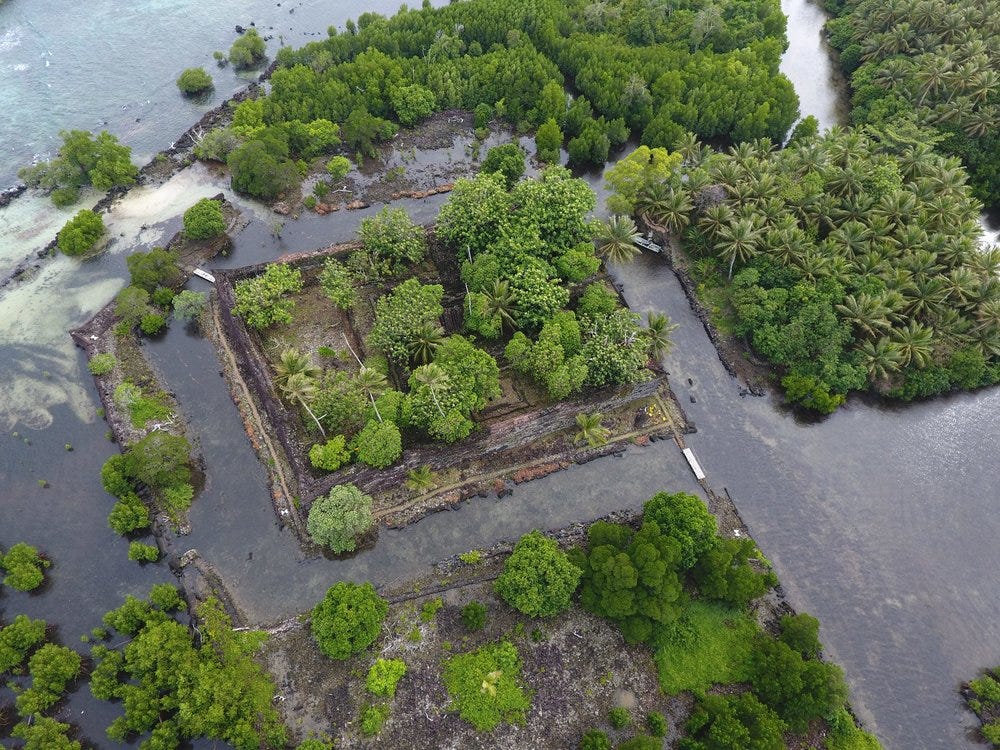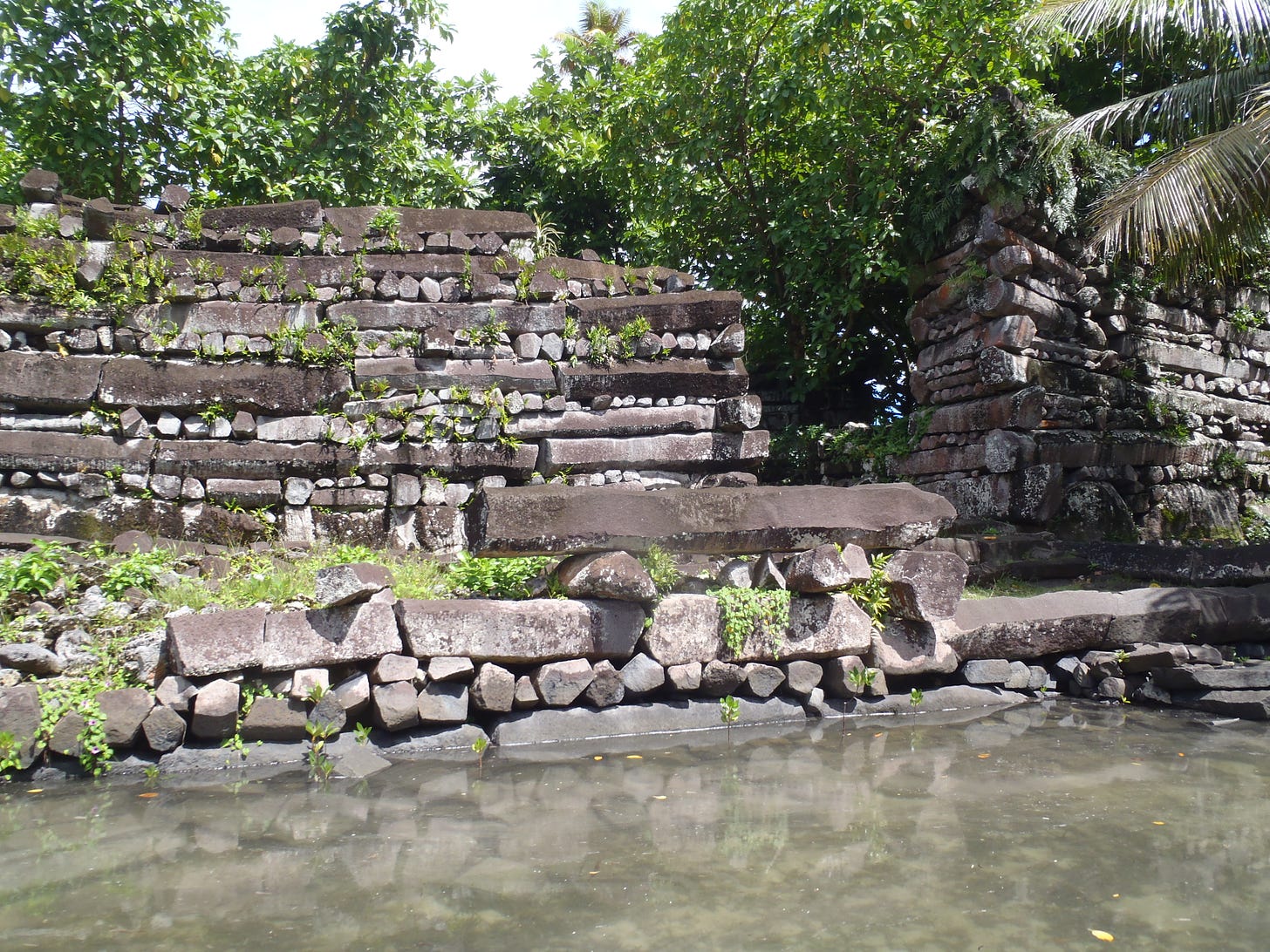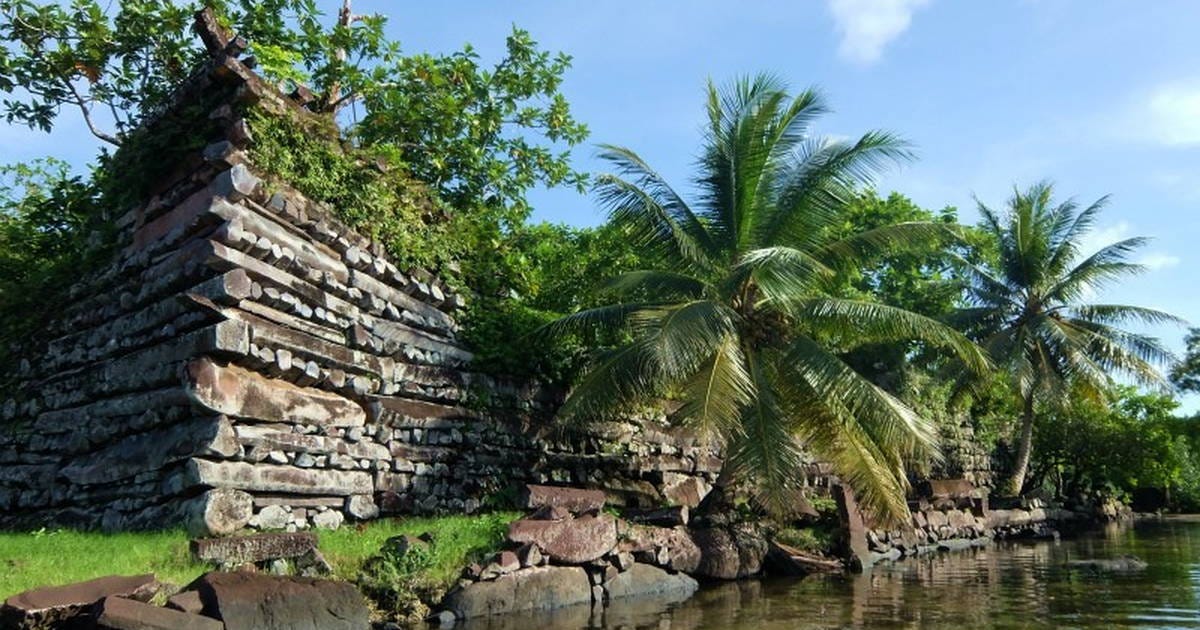The Mystery of the “Lost City” Of Nan Madol
The only ancient city ever built upon a coral reef, Nan Madol is such an unbelievably complex marvel of ancient engineering that it begs one question to be asked: "how was it possible to build it"
A City in the Middle of Nowhere
The abandoned metropolis of Nan Madol is in the middle of nowhere, more than 1000 km from the nearest coast. It is also known as the "Venice of the Pacific. “As of today, it is the only known ancient city built on the top of a coral reef and is considered one of the world's genuinely unexplained mysteries.
But before we even attempt to solve the mystery, the difficult part is getting to the island of Pohnpei, the nearest island to Nan Madol. For those who are unaware, Pohnpei is a small island forming part of the Senyavin Islands in the Federated States of Micronesia (FSM). Due to its small size, low population, and OOS-OOM (out of sight, out of mind) treatment, FSM gets minimal tourists, due to which getting to Micronesia can be a little complicated.
Your best bet to get to the island is via the “island hopper” flight run by United Airlines. It starts in Honolulu with stopovers at the Marshall Islands and Micronesia on the way to Guam three days a week. Once you reach Pohnpei, it is a 90-minute drive to Nan Madol from the capital city of Palikir.
And once you reach Nan Madol, you will see a city with gigantic walls constructed out of basalt, a type of volcanic rock. The total weight of the basaltic rock used in the city is 750,000 metric tons, with some individual basaltic logs weighing upwards of 50 tons. Even more mysterious is that the people who built the town did not have pulleys, gears, or metals to aid the construction.
So how did they build the city? This mysterious engineering marvel is one of the most significant archaeological mysteries still unsolved in modern times.
The Mysterious City of Nan Madol
Nan Madol is built in a lagoon with 99 small artificial islands intricately linked by a network of canals. This canal system resembles Venice's canals. That is why Nan Madol is also called the “Venice of the East." Nan Madol means “spaces between” and refers to the canal system that runs between the massive walls.
The massive walls are constructed out of thousands of of basalt “logs, “with an average weight of each stone being 50 tons and walls going over 15 meters (49.21 ft.) and up to 5 meters (16.40 ft.) thick. The canals were as wide as four-lane roads and were designed for trade and commerce. They are also relatively shallow at several points, with watch towers built to keep a watch over enemy ships.
No quarries existed near the city, and that would mean that the builders transported the stones across the water over several miles without the aid of any mechanical equipment or metals, which was truly unique.
And another question was the very location of the city. Nothing grows in Nan Madol, and there is no fresh water. Besides the seafood that swims around the island, everything else, including the crops, must be brought in to the city from surrounding areas. And we are talking about a large population of more than 25000 people who lived and stayed in this remote wilderness in apparent luxury.
While this is certainly possible through water travel, it begs the question to be asked, why did the builders select such a desolate location to build such a massive metropolis?
The Empire of Saudeleur
Nan Madol was the capital of the Saudeleur Dynasty that united the people of Pohnpei, and ruled over them until about 1628.
According to a local legend, Nan Madol was founded by two brothers Olisihpa and Olosohpa, who first came to the island to expand their empire. It is said that they brought the massive basalt stones on the back of a giant flying dragon to build the city. When Olisihpa died of old age, Olosohpa declared himself the King founding the Saudeleur dynasty. The dynasty went on to rule Nan Madol for the next 16 generations.
Nan Madol housed the ruling elite caste of Saudeleur dynasty and was a political seat of power. It was also a commercial powerhouse with trade links going all the way to Mexico and possibly the other Asian civilizations of that era. The islets to the northeast, particularly Nan Douwas were used for rituals and ceremonies, whereas the other areas in and around Nan Madol were administrative and residential areas based on a class system with King at the top of the hierarchy.
The Saudeleur king was supreme at Nan Madol. The land, its produce, and even the people were owned by the King, who leased the land to landlord classes for harvesting it. The King taxed the common people with tributes based on their income as set by the administration.
The Saudeleur dynasty lasted till 1628, after which the city was mysteriously abandoned. Early missionaries in the area sent back reports of the mysterious ruins as late as 1850. Where did the people of Nan Madol go? Was Nan Madol conquered? Did disease or a tsunami wipe them out?
Unfortunately, no written records, carvings, or art of the Saudeleur dynasty have survived. The only knowledge comes from the Pohnpeians' oral history, who describe their rulers as profoundly religious and cruel. Signs of the Empire of Saudeleur still exist on this island city, from kitchens and palaces to exquisite tombs. However, many mysteries of Nan Madol remain unanswered even today.
How Was the City Built?
Many theories try to explain this engineering marvel.
According to the local people, the city of Madol was there before they even arrived. The islanders have no written records of who built it, but they believe that the people of Nan Madol knew how to control sound waves to levitate the massive columns. Thus, the stones used to fly as if “moved by ghost hands." That is why the locals also call Nan Madol the "city of Ghosts".
However, archaeologists believe that the stones were brought to the city by using bamboo rafts that floated across the water. However, in 1995 all scientific attempts to transport stones heavier than a ton in this fashion failed. Nan Madol has thus become an archaeologist’s enigma with few artifacts and no written records.
Some theorists also believe that Nan Madol contains the remains of the “lost continents” of Lemuria and Mu. Mu is a legendary lost continent introduced by the scientist Augustus Le Plongeon. According to him, Mu was located in the Pacific Ocean before its destruction. Later, author James Churchward postulated in his book “The Lost Continent Of Mu” that Nan Madol might be the mythical continent of Mu with technological supremacy far ahead of its times.
Is it possible that Nan Madol will reveal the existence of an advanced civilization? Was it created by humans or aliens? Why was the city built in such a remote place in the first place? And why was it abandoned suddenly?
The questions and possibilities surrounding Nan Madol make it one of the most intriguing places on Earth.
Sources
· The real unsolved mystery of Nan Madol
· Nan Madol: Mystery of the Pohnpei island
· The Mysteries Of The “Lost City” Of Nan Madol
· Nan Madol: A mysterious hi-tech city built 14,000 years ago?
· Nan Madol: The Mysterious Ancient Coral Reef City
· The mysterious prehistoric city that has baffled scientists for years
· Nan Madol: Archaeologists Uncover Earliest Evidence of Chiefdom in Pacific
· Satellite Images Show Mysterious Nan Madol Ruins From a Brand-New Perspective







